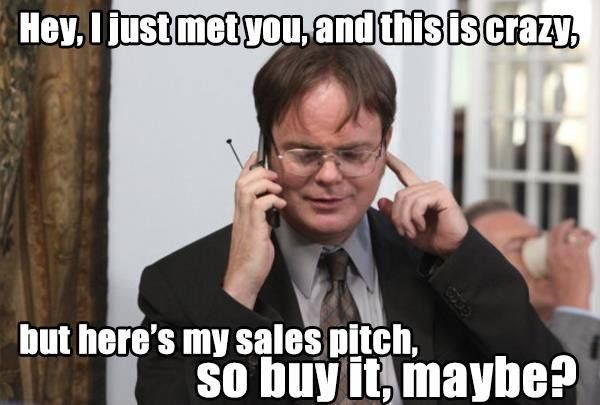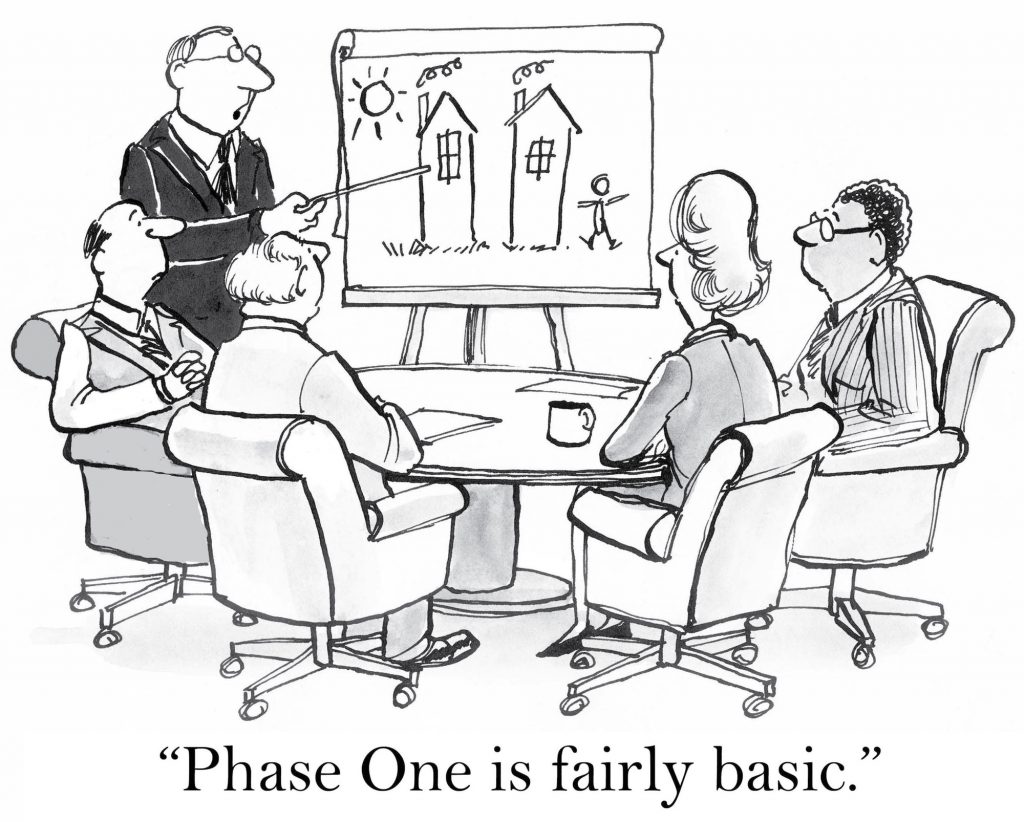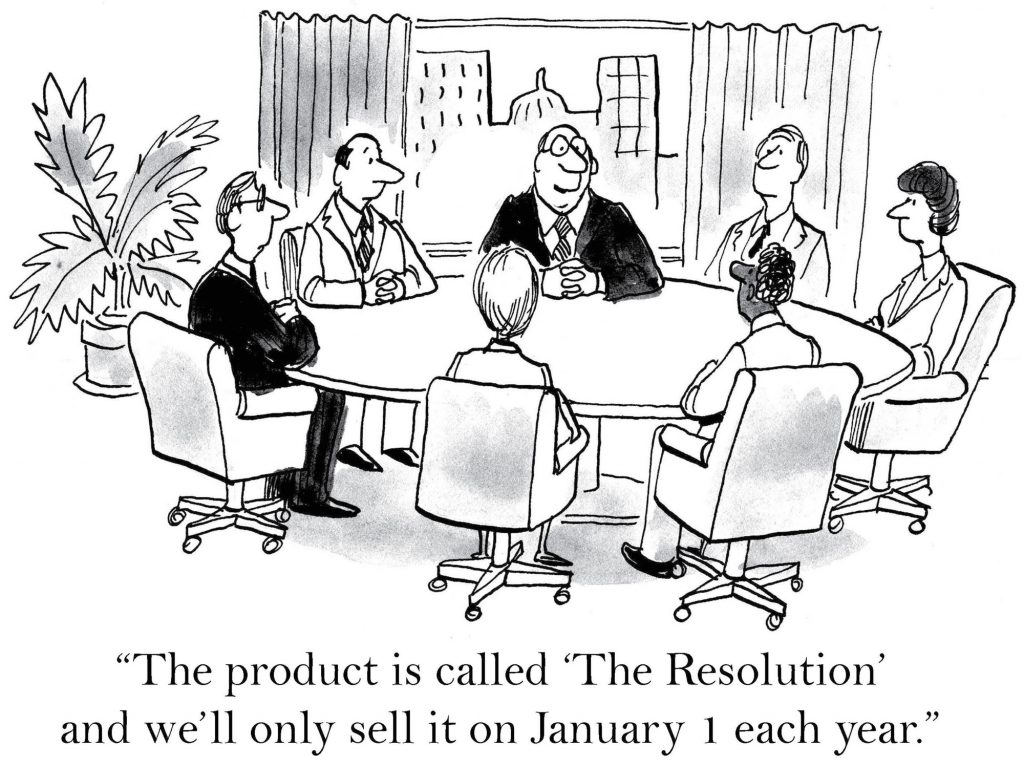How to Write a Winning Software Development Project Pitch

The Art of a Software Sales Pitch
It might be the time when you’re ready to share your ideas with the world, moreover, you’re pretty sure you can capitalize on your idea and sell it to a curious investor who’d believe in you and your proposed business model. Now, while this article won’t delve into where exactly you can find that curious investor, we’ll tackle the intricacies of writing and delivering a project proposal or business pitch. We’ll start from the basic definitions and slowly move on to the process of writing the pitch, construing a pitch deck, making a presentation, and, finally, closing your pitch with a bang.
What is a pitch?

Sales Pitch meme
A pitch is a carefully prepared sales presentation that aims to persuade someone to purchase an advertised product or service. There are two types of sales pitches: those prepared for the audience who knows nothing about the product/service, and those prepared for the audience who’s already familiar with the product/service or has expressed or shown interest in it.
What is an elevator pitch?
An elevator pitch is a short description of an idea, company, product, or service that’s constructed in such a way as to get a listener a pretty good idea of what the pitched thing is, who it is for, what it does, why it is needed, and how it will get things done.
Again, there are different types of elevator pitches, ranging from 5 seconds (best known as a fast elevator) and 30 seconds (a slow elevator) to 5 or even 30 minutes. But generally, everything that’s above 3 minutes is not an elevator pitch, it’s just a pitch. Of course, if you know of a short attention span of your audience and have pretty strict time constraints, then you won’t be able to incorporate all elements of an elevator pitch described above; however, still, aim at relating what your idea is and how it’s valuable for the audience.
While the main idea of a sales pitch is ultimately to sell, an idea of an elevator pitch is to entice an investor and let them hang in there desiring to hear more.
Think of an elevator pitch as the perfect summary of your idea that you need to deliver in a span of an elevator ride or approximately 30 sec to 2 minutes max.
What is a pitch deck?
Pitch deck is a presentation that gives a quick overview of your idea and business plan. The pitch deck should address the following issues: short and sweet introduction, followed by the showcase of people behind an idea, introduction to a problem, proposed solution and its advantages, explanation of how the product/service works, proof of potential with the inclusion of stats here and there, overview of the market and competition, detailed business model, planned budget, assumed risks and rewards, and finally, your contact information.
How to write a project pitch & What goes into a project pitch
There’s a huge difference between how you write your pitch, what you actually put from your written speech on your pitch deck, and how you deliver your presentation face-to-face with a hungry investor. For the purposes of this section, let’s break down the anatomy of a written piece, which you’ll later edit, proofread, revise, and shorten to key brief ideas that’ll go to the pitch deck.
Since technically advanced products are generally hard to explain to the general public, investors included, you need to cut through all of the technical jargon that might confuse and put the buyer off and change it to less technical vocabulary. Now, you need to understand, that no matter how good or innovative your product is, much of its fate will depend on how you master the art of presenting it to potential investors.

The Tagline Is …
Before you even start writing, spend a decent amount of time studying your own product or service and exploring its capabilities, advantages, and disadvantages. That might seem counterintuitive since you’ve most obviously developed your own product, but trust us, studying your product and breaking it down and assembling it again in terms of its qualities, can lead you to surprising discoveries. Then compare your product to that of your competitors and outline its advantages and shortcomings.
After spending time pondering over the advantages and disadvantages of your and your competitors’ products, it’s time to research your prospective customers, including the profile of a potential investor. Look at the challenges they face, research their hobbies and interests, and see what business opportunities they might be looking for. By exploring the interests and the challenges your potential buyers experience with their current software, you’ll get an idea of how your software set of features aligns with what your consumers want and expect.
After the initial research, it’s time to prepare your software sales pitch. These are a few tips on the structure and content of your presentation. More information on what to include in your written piece can be found under ‘How to make a pitch deck’ section.
Opening statement

“Phase One is fairly basic”
There are a few effective opening statements you can employ for the purposes of hooking up your audience and introducing them to the overall theme of the presentation:
- Begin with a bold and controversial statement. First, introduce the common knowledge and then challenge an assumption, claim something less agreeable or outright shocking. For example, ‘Business meetings are an important part of enterprise management. However, we can all agree, meetings are a waste of time.’ Then, explain why your claim is, in fact, legitimate and what your software does to fix the problem.
- Throw in some shocking or interesting statistics and then introduce a statement of how your software can help break the pattern. For example, ‘According to recent research, the time that employees spend on commuting could have been spent on the actual work resulting in an overall 200% increase in productivity.’
- Introduce a common problem and explain how your product can solve it. For example, ‘According to publicly available statistics, spam messages cost businesses 10 mln dollars on average per year. This could be changed by introducing our groundbreaking spam-free email software.’
- Start with your product: show stats, graphs, tables that make your product appear impressive, productive, effective, or proves a point right from the start.
- And finally, start with an inspiring story. There are numerous books available on the power of business storytelling, so we won’t delve into how cool the storytelling actually is, suffice to say — everyone loves stories, especially captivating ones; however, make sure they are not long enough to bore your audience.
Business introduction
After an opening statement, it’s time to introduce your business and your team. Explain who you are, what you do, and why you’re a professional in your field.
Body of the presentation

Statistics
In the body of your presentation, introduce a problem, if you have not yet done so in the opening statement, and even if you did, reiterate the problem and illustrate how your software is going to solve it and what advantages it has in comparison with your competitors.
While describing your software make sure you explain how it’s used, where it’s available, what it needs to run, how and where it’s supported, how it’s unique and unprecedented, attempt to predict the scope of its target market, compare it to that of competitors’, and spend a decent amount of time explaining how you plan to make money from it. When describing your business model, show an approximate schedule of expected revenues and your predictions of returns on investment.

Target Consumer
Summary of the offering
By the end of your presentation, ensure you summarize your offering by sharing some salient points of sales pitch restating what your software does, how it’s different, how it’s profitable, and why your investor needs it.
Closing statement

Closing Remarks
A closing statement just like an introduction needs to be as bold and assertive as your opening remark. Repeat the statistics, challenge an assumption you introduced in the beginning, or finish the story you started. After your closing remark, share your contact details and ask your potential buyer if they have any questions.
How to write an elevator pitch for a project
Suppose, you don’t really have 10-15 minutes for a presentation, but 3 minutes at most when thrown in face to face with a potential buyer in an elevator, cafeteria, party, business event, or in a queue for train tickets (whenever and wherever your investor of choice happens to be). This way, you’ll need to shorten your pitch and squeeze the best arguments into the given time constraints. An elevator pitch is sometimes your only chance to make that good first impression and generate interest in your persona and what you have to offer.
What to include in your elevator pitch

What lies in the name?
Since your whole pitch deck needs to be condensed into a 30-second (3 minutes at most) speech, you’ll need to explain the need for your software, its unique selling point, business model, and its stand against competitors.
Here’s the proposed model for information to include in an elevator pitch:
- Your name
- The name of your company
- Brief description of your product
- Overview of the target market and consumers
- Explanation of a unique selling proposition and differentiation from competitors
- Call to action
Since the ultimate goal of an elevator pitch is to progress to a meeting, where you can deliver your full-fledged sales pitch, you’ll need to make your 30-second introduction captivating. Here are a few strategies to make it work:
- The best way to start is by sparking a conversation. Don’t try to be overly technical or use professional jargon, instead — get your message as clear and crisp as possible.
- Ask a question. A perfect example is Steve Job’s elevator pitch when he convinced John Sculley to leave Pepsico. for Apple Inc. where he famously asked: “Do you want to spend the rest of your life selling sugared water, or do you want a chance to change the world?”
- Instead of focusing on you, shift focus on your potential buyer and what they need or want. For example, ‘Did you get stuck in a traffic jam on your way here? I bet most people did that exactly why we had so many guests who were late. But imagine if you could fly to the party? Sounds intriguing? Flying cars are exactly the things we build with Elon Musk at the moment.’
- If you have a working product that’s been tested and has already shown some promising results, then you may start from there and simultaneously cast off some of your investor’s doubts or risk concerns.
- Add an emotional benefit, because decision-making is not only a purely rational activity: some people act on emotional impetus when they sense the product or service can give them pleasure or satisfaction.
- Make sure you add a clear call to action in the end. For example, ‘In case you’re interested, I’ll be glad to stop by your office, say Monday morning?’
How to make a pitch deck

It’s Toasted!
The pitch deck can be prepared using PowerPoint, Google Slides, Keynote, or Prezi, and delivers the key ideas that you’ll deliver during your sales pitch. Each slide should be focused on expressing one single idea so as not to overwhelm your audience and make sure that everyone’s on the same page and understand what you’re talking about. Keep a consistent look in your presentation by using the same font, size, color, capitalization format across all slides of your pitch deck. Never use many bullet points, since those will ultimately lead to killing the whole presentation. Do not be verbose on your slides, limit the amount of text you put on the deck. Don’t make your pitch too long, no one wants to hear your fantastic idea for more than 15 minutes. Don’t read from the script, memorize your pitch so you’ll deliver it seamlessly without constantly looking on paper or slides of your presentation. Your pitch deck and your sales pitch should become your second nature.
This is the approximate structure of your sales pitch deck:
- Introduction. A short and sweet statement that will hook the listers and prepare them for the presentation.
- Team. Who you are, what you do.
- Problem. Introduce the problem you’re trying to solve.
- Solution. Introduce the solution you’re offering with your software. What makes your solution special?
- Software. How does your product work? Here you can demonstrate a demo of your product rather than trying to explain it handwavy.
- Target market. What’s the measurable set of potential consumers that proves the product’s potential. Who and how many will use your product?
- Competition. Are there any alternative solutions? How’s your product different and your solution better?
- Business model. How do you plan to make money? Show a schedule of your expected revenues.
- Investment. Why do you need money now? What kind of money you’re looking for? What’s your planned budget? How an investor will benefit from giving their money to you now?
- Closing statement. It can be a summary, a quote, the end of the story, and a call to action.
- Contact information. How can people reach out to you?
Summary: How to pitch a software project proposal

Be confident!
Regardless of how immaculate your code is or whatever best ideas you have, these are ultimately sterile unless you can communicate with other people. Now, we’ve written a detailed piece on improving your public speaking skills, so make sure you check it out if speaking comes unnaturally to you or you suffer from glossophobia.
And when you’ve worked on your communication skills and are ready to present your best ideas in a succinct and eloquent manner, it’s time to research both your product capabilities, potential existing target market, and your competitors.
After the initial research and gathering of applicable data, start writing your very first pitch deck. While working on the slides, think of your audience and what you want them to learn, think of how much detail they need, or how you can motivate them to listen to you. If you’re going to deliver your pitch deck to a business person unrelated to software development, don’t just go into an endless monologue of all possible features your arcane software has, but instead be quick, be concise, and polite enough not to overwhelm your audience with incomprehensible vocabulary.
The common mistakes you can make are misjudging your audience, not adequately motivating your idea, not covering the alternatives, and finally, not presenting a realistic picture of how your software is going to perform through time and what revenue it will generate.
Remember that after listening to your pitch, your audience must be able to answer the following questions:
- What’s the target audience?
- Who needs the product?
- What’s the product’s name?
- What does the product do?
- What’s the key benefit? Why should I buy it?
- How’s the product different from its competitors?
Useful links
Best pitch decks examples
Guy Kawasaki Pitch Deck
Conclusion

Pitch as a Weapon
Know what you have to say, know your audience, make your presentation look good, choose the right moment, be succinct and eloquent, be polite, involve your audience, and be a good listener. These are the basics of any good sales pitch. If you have an outstanding idea, you’re polite and respectful of your audience, you keep your pulse on the time, and deliver what your listeners expect, then you’re on the right track.











3 comments
Any tips on in fact how one could locate software developers to hear your product pitch? I myself am holding IP, and a solid implementation for them to take over. I even have an eager owner to take the lead with money. I did the engineering and first complete worthy implementation, and want to turn it over to a team!
your information is incomplete with example.
It’s very great information for those who try to write new software. but it’s more effective if you gave an example. it’s become easier to totally understand. add an emotional benefit, because decision-making is not only a purely rational activity: some people act on emotional impetus when they sense the product or service can give them pleasure or satisfaction.